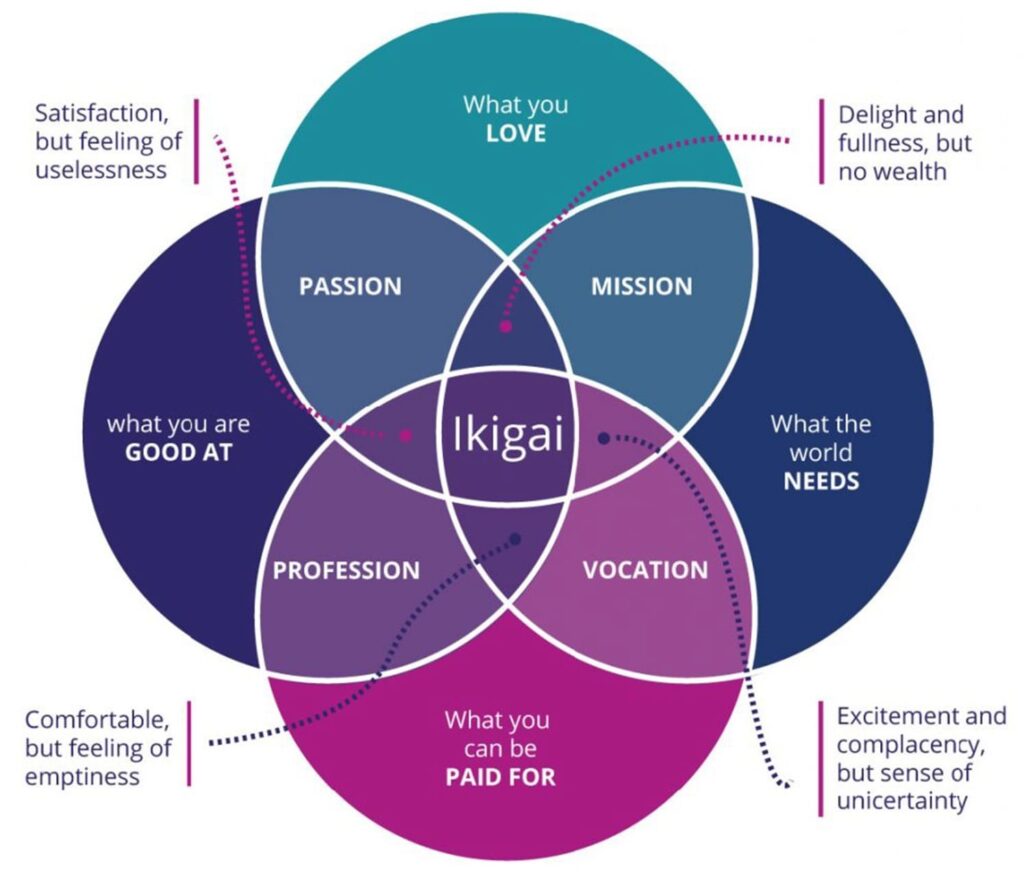
 By
Beauty Adams
By
Beauty Adams

Do you feel like you are living a life that is not aligned with your true self? Do you wonder what your purpose and passion are, and how to pursue them? If you answered yes to these questions, then this blog post is for you.
In this post, I will share with you some tips and strategies on how to find your purpose and passion in life, and how to live a fulfilling and meaningful life.
Before we dive into how to find your purpose and passion, let’s first define what they are.
Purpose is the reason why you exist, the ultimate goal that you want to achieve, and the impact that you want to make in the world.
Passion is the feeling of enthusiasm, excitement, and joy that you experience when you do something that you love, something that aligns with your values, strengths, and interests.
Purpose and passion are closely related, but they are not the same thing. You can have a passion for something, but not have a clear purpose for it. For example, you may love playing video games, but not have a specific goal or vision for how you want to use your gaming skills. On the other hand, you can have a purpose for something, but not have a passion for it. For example, you may have a noble purpose of helping the poor, but not enjoy the work that you do for them.
The ideal situation is to have both purpose and passion for what you do because that will give you the motivation, direction, and fulfillment that you need to live a happy and successful life. However, finding your purpose and passion is not always easy. It requires self-awareness, exploration, and experimentation. In the next sections, I will show you some steps that you can take to find your purpose and passion in life.

Finding your purpose is not a one-time event, but a lifelong journey. Your purpose may change over time, as you grow, learn, and experience new things. However, there are some ways that you can discover your purpose, or at least get closer to it. Here are some steps that you can follow:
Your values are the principles that guide your decisions and actions. They reflect what is important to you, what you stand for, and what you believe in. Your values can help you find your purpose because they can point you to the causes, issues, and problems that you care about, and that you want to contribute to.
To identify your values, you can ask yourself questions such as:
You can also use a list of common values, such as honesty, integrity, justice, freedom, compassion, creativity, excellence, etc., and rank them according to your preference. You can then choose the top three to five values that resonate with you the most, and write them down.
Your strengths are the things that you are good at, the things that you enjoy doing, and the things that come naturally to you. Your strengths can help you find your purpose because they can show you the ways that you can use your talents and abilities to make a positive difference in the world.
To identify your strengths, you can ask yourself questions such as:
You can also use a tool such as the StrengthsFinder or the VIA Character Strengths to assess your strengths and get a report on your top strengths. You can then write down your top three to five strengths, and how you can use them to serve others.
Your vision is the picture of the future that you want to create, the ultimate goal that you want to achieve, and the impact that you want to make in the world. Your vision can help you find your purpose, because it can give you a clear direction and a sense of meaning for your life.
To identify your vision, you can ask yourself questions such as:
You can also use a tool such as the Vision Board or the SMART Goals to create a visual representation or a specific plan for your vision. You can then write down your vision in one sentence, and make sure that it is inspiring, realistic, and measurable.
Your mission is the statement that summarizes your purpose, the reason why you exist, and the way that you will achieve your vision. Your mission can help you find your purpose, because it can serve as a guide and a reminder for your actions and decisions.
To identify your mission, you can use the following formula:
My mission is to use my (strengths) to (action) for (values) in order to (vision).
For example, your mission statement could be:
You can then write down your mission statement, and review it regularly to make sure that it aligns with your values, strengths, vision, and passion.
Finding your passion is not a matter of luck, but a matter of exploration. Your passion is not something that you are born with, but something that you discover and develop over time. However, there are some ways that you can find your passion, or at least get closer to it. Here are some steps that you can follow:
Your interests are the things that you are curious about, the things that you want to learn more about, and the things that you enjoy doing. Your interests can help you find your passion because they can reveal your preferences, hobbies, and potential careers.
To identify your interests, you can ask yourself questions such as:
You can also use a tool such as the Holland Code or the Myers-Briggs Type Indicator to assess your personality type and your compatible interests. You can then write down your top three to five interests, and how you can pursue them.
Your flow is the state of mind that you experience when you are fully immersed, engaged, and focused on an activity that you enjoy and that challenges you. Your flow can help you find your passion because it can show you the things that you are passionate about, and that make you happy.
To identify your flow, you can ask yourself questions such as:
You can also use a tool such as the Flow Profile or the Flow Trigger to measure your flow state and your flow potential. You can then write down your top three to five flow activities, and how you can do them more often.
Your ikigai is the Japanese concept that means “a reason for being”, or “the thing that you live for”. Your ikigai is the intersection of four elements: what you love, what you are good at, what the world needs, and what you can be paid for. Your ikigai can help you find your passion because it can show you the things that you are passionate about, and that give you a sense of purpose and value.
To identify your ikigai, you can use the following diagram:

You can then fill in the blanks with your values, strengths, interests, and vision, and find the common elements that overlap in the center. You can then write down your ikigai in one sentence, and make sure that it is meaningful, fulfilling, and sustainable.
Your experiment is the action that you take to test your passion, to see if it is something that you want to pursue, and that you can succeed in. Your experiment can help you find your passion because it can give you the feedback, the experience, and the learning that you need to validate and improve your passion.
To identify your experiment, you can ask yourself questions such as:
You can also use a tool such as the Lean Startup or Design Thinking to design, execute, and evaluate your experiment. You can then write down your experiment in one sentence, and make sure that it is specific, measurable, achievable, relevant, and time-bound.
Finding your purpose and passion is not enough, you also need to live them. Living your purpose and passion means taking action, making progress, and overcoming challenges. It also means enjoying the journey, celebrating the achievements, and sharing the benefits. Here are some tips on how to live your purpose and passion:
Finding your purpose and passion in life is not easy, but it is possible.
By following the steps and tips that I have shared with you, you can discover what you are meant to do, and what you love to do. You can also live a life that is fulfilling, meaningful, and happy. I hope that this blog post has inspired you, and helped you. Thank you for reading, and good luck on your journey! 😊





Never miss an important update. Be the first to receive our exclusive beauty tips straight into your inbox.